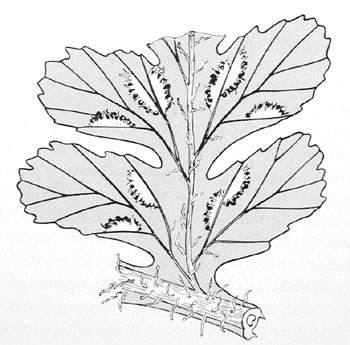|
Hardy Fern Home Diplazium resources
All Ferns � Woodsiaceae �� Diplazium
�Other Genera
|
| Diplazium Earlier placement: | ||
Twin-sorus fern | ||
|
Etymology
From the Greek diplazios which means double, because indusia lie on both sides of the vein.
Description
Rhizome: creeping to erect, scaly.
Frond: deciduous or evergreen, trophopod, monomorphic or weakly dimorphic. Stipe: green, deeply grooved above, swollen or not at base, scaly or glabrous, vascular bundles: 2, lunate. Blade: 1-2 pinnate (entire), oblong-lanceolate to deltate, herbaceous to papery. costae U-grooved above, continuous from rachis to costae, segments entire, crenulate, or serrate, veins free or netted. Sori: linear, basal sori paired back-to-back on the same vein, indusium: linear, persistent, sinus, sporangia: brownish.
Distinctive Characteristics
Diplazium is very close to Athyrium, but the sori never hook over the veins, and are sometimes paired back-to-back. Additionally, the grooves in the rachis are U-shaped vs. V-shaped in Athyrium. Differs from Deparia in having the grooves continuous from costa to rachis.
|
|
|
Notes
Taxonomy The genus is large with 400 species, nearly all tropical. The few from temperate regions are not representative.
Taxonomy The genus is large with 400 species, nearly all tropical. The few from temperate regions are not representative.
